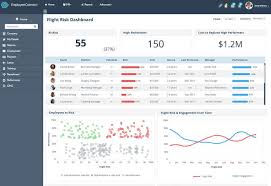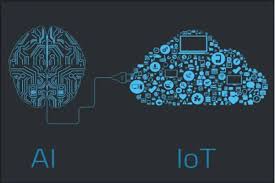The Power of HR Data Analytics
In today’s fast-paced business environment, data is king. Human Resources (HR) departments are no exception to this rule. With the advent of HR data analytics, organisations can harness the power of data to make informed decisions that drive business success.
Understanding HR Data Analytics
HR data analytics involves collecting, analysing, and interpreting data related to employees and workforce trends. By leveraging advanced analytics tools and techniques, HR professionals can gain valuable insights into various aspects of their workforce, such as employee performance, engagement levels, retention rates, and recruitment effectiveness.
The Benefits of HR Data Analytics
Implementing HR data analytics offers numerous benefits to organisations:
- Improved Decision-Making: By basing decisions on data-driven insights rather than gut feelings or anecdotal evidence, organisations can make more informed and strategic HR decisions.
- Enhanced Recruitment: Analyzing recruitment data can help identify successful hiring patterns and improve the quality of new hires.
- Employee Engagement: Monitoring employee engagement through data analytics allows organisations to take proactive steps to boost morale and productivity.
- Talent Retention: Identifying factors that contribute to employee turnover can help implement retention strategies that reduce attrition rates.
- Performance Management: Tracking performance metrics enables managers to provide targeted support and development opportunities for employees.
Challenges in Implementing HR Data Analytics
While the benefits of HR data analytics are significant, implementing an effective analytics strategy comes with its challenges. Some common hurdles include:
- Data Quality: Ensuring the accuracy and reliability of HR data is crucial for meaningful analysis.
- Data Privacy: Safeguarding employee privacy while collecting and using sensitive HR data requires careful consideration.
- Skill Gap: Building a team with the necessary skills in data analysis and interpretation may pose a challenge for some organisations.
- Cultural Resistance: Overcoming resistance to change and promoting a data-driven culture within the organisation can be a barrier to successful implementation.
The Future of HR Data Analytics
The future holds great promise for HR data analytics. As technology continues to advance, organisations will have access to even more sophisticated tools for analysing workforce data. Predictive analytics, machine learning algorithms, and AI-powered solutions will enable HR professionals to anticipate trends, forecast outcomes, and drive strategic decision-making like never before.
Maximising HR Success: The 7 Key Benefits of Data Analytics
- Improved decision-making based on data-driven insights
- Enhanced recruitment strategies through analysis of hiring patterns
- Increased employee engagement by monitoring and addressing trends
- Effective talent retention through identification of turnover factors
- Optimised performance management with targeted support for employees
- Better workforce planning by forecasting future trends and needs
- Cost savings through efficient resource allocation and productivity enhancements
Challenges in HR Data Analytics: Privacy, Costs, Skills, and Change Resistance
Improved decision-making based on data-driven insights
One of the key advantages of HR data analytics is the ability to enhance decision-making by relying on data-driven insights. By analysing relevant workforce data, HR professionals can make informed and strategic decisions that are backed by empirical evidence rather than subjective opinions. This approach not only increases the accuracy and effectiveness of decision-making processes but also helps organisations align their HR strategies with overarching business goals, leading to more successful outcomes and sustainable growth.
Enhanced recruitment strategies through analysis of hiring patterns
Enhanced recruitment strategies through the analysis of hiring patterns is a significant advantage of HR data analytics. By examining historical data on successful hires, organisations can identify patterns and trends that lead to better recruitment decisions. Understanding which candidate attributes, sourcing channels, and selection methods result in successful hires enables HR professionals to refine their recruitment strategies, target the right talent pools, and ultimately improve the quality of new hires. This data-driven approach not only streamlines the recruitment process but also increases the likelihood of finding candidates who are the best fit for the organisation’s culture and requirements.
Increased employee engagement by monitoring and addressing trends
By utilising HR data analytics, organisations can significantly enhance employee engagement by actively monitoring and addressing trends within the workforce. By analysing data related to factors such as job satisfaction, performance metrics, and feedback, HR professionals can identify patterns and trends that impact employee engagement levels. This proactive approach allows organisations to implement targeted strategies to address issues promptly, boost morale, and create a more engaging work environment. Ultimately, increased employee engagement leads to higher productivity, improved retention rates, and a more positive organisational culture.
Effective talent retention through identification of turnover factors
One significant advantage of HR data analytics is the ability to enhance talent retention by identifying key factors contributing to employee turnover. By analysing data related to turnover rates, employee feedback, performance reviews, and other relevant metrics, organisations can pinpoint underlying issues that may be driving valuable employees to leave. This proactive approach enables HR professionals to implement targeted retention strategies, address concerns, and create a more engaging work environment that fosters loyalty and commitment among employees. Ultimately, effective talent retention through the identification of turnover factors not only helps reduce attrition rates but also contributes to a more stable and productive workforce.
Optimised performance management with targeted support for employees
By utilising HR data analytics, organisations can achieve optimised performance management by providing targeted support for employees. Through the analysis of performance metrics and data insights, managers can identify specific areas where employees may need assistance or development. This targeted approach enables managers to offer personalised support, training, and resources to help employees reach their full potential and enhance overall performance within the organisation.
Better workforce planning by forecasting future trends and needs
One of the key advantages of HR data analytics is its ability to enhance workforce planning by forecasting future trends and needs. By analysing historical data and identifying patterns, organisations can make more accurate predictions about their future workforce requirements. This proactive approach allows HR professionals to anticipate changes in staffing needs, skills gaps, and talent acquisition strategies, enabling them to align their workforce with the evolving demands of the business. Ultimately, better workforce planning through data analytics leads to improved resource allocation, increased efficiency, and a more agile and responsive organisation.
Cost savings through efficient resource allocation and productivity enhancements
One significant advantage of HR data analytics is the ability to achieve cost savings through efficient resource allocation and productivity enhancements. By analysing workforce data, organisations can identify areas where resources are underutilised or misallocated, allowing them to make strategic adjustments to optimise efficiency. Moreover, by gaining insights into employee performance and engagement levels, HR professionals can implement targeted interventions to enhance productivity across the organisation, ultimately leading to cost savings through improved operational effectiveness.
Data Privacy Concerns
Data Privacy Concerns are a significant con of HR data analytics. Collecting and analysing HR data raises privacy issues as sensitive employee information is involved. Ensuring the confidentiality and security of personal data is crucial to maintain trust and compliance with data protection regulations. Organisations must implement robust data privacy policies and practices to safeguard employee information and mitigate the risks associated with potential breaches or misuse of sensitive data. Balancing the benefits of HR data analytics with the protection of individual privacy rights remains a key challenge for businesses seeking to leverage data-driven insights in their HR practices.
Implementation Costs
Setting up an HR data analytics system can be a daunting task for small and medium-sized businesses due to the high implementation costs involved. From acquiring the necessary software and tools to training staff in data analysis, the financial investment required can put a strain on limited budgets. This financial barrier may hinder smaller organisations from fully leveraging the benefits of HR data analytics, potentially impacting their ability to make informed decisions and optimise their workforce effectively.
Skill Requirements
One significant challenge posed by HR data analytics is the skill requirements it demands. Many organisations struggle to find and retain employees with the essential data analysis skills and knowledge needed to effectively interpret and utilise HR data. The demand for professionals proficient in data analytics continues to rise, leading to a competitive landscape where recruiting and developing talent in this field can be a daunting task for HR departments. This skill gap highlights the importance of investing in training and upskilling initiatives to equip existing staff with the capabilities required to leverage the full potential of HR data analytics within an organisation.
Resistance to Change
Introducing HR data analytics may encounter resistance from employees who are accustomed to traditional decision-making processes. The shift towards data-driven decision-making can be challenging for individuals who are more comfortable with relying on intuition or past experiences. Overcoming this resistance requires effective communication, training, and demonstrating the tangible benefits of using data analytics in HR practices. Encouraging a culture that values the insights gained from data can help alleviate concerns and foster acceptance of this transformative approach to decision-making within the organisation.






